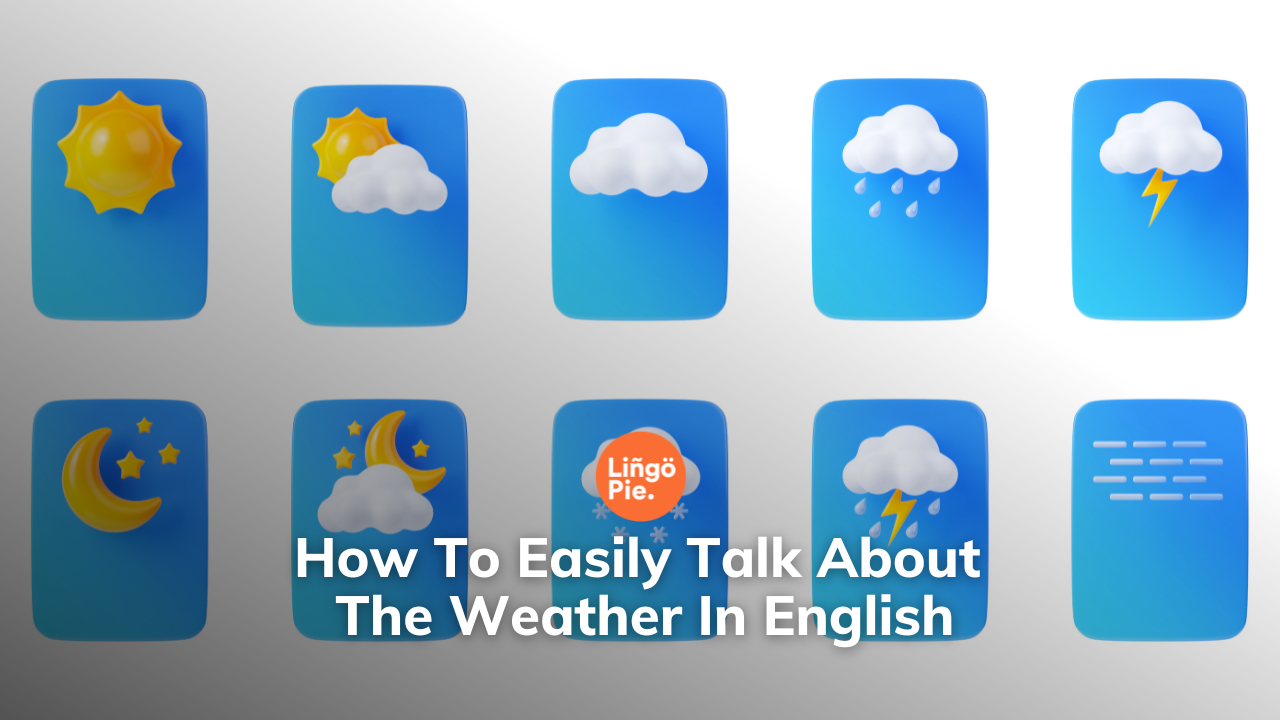Have you ever dreamed of becoming fluent in a new language in just 30 days?
It's a tempting thought, isn't it? Picture yourself effortlessly chatting away with locals in a far-off land, soaking in the culture, and feeling like a linguistic wizard. But let's be real – can this dream actually become a reality, or is it just wishful thinking?
In today's blog post, we will dive into the nitty-gritty of rapid language learning. We'll explore whether getting fluent in such a short time frame is achievable and what it really takes to make it happen.
While the idea of becoming fluent in 30 days might seem like a lofty goal, it's not entirely out of reach. However, it will require some serious dedication, smart strategies, and a healthy dose of realism. So, let's figure out if learning a new language in 30 days is realistic or not?
Setting Realistic Goals
Alright, let's talk about setting some goals that actually make sense when it comes to learning a new language. Learning a language isn't like flipping a switch—it's a whole process that takes time and effort. So, before you dive in, it's important to understand that it's not going to happen overnight.
First things first, let's figure out what "fluency" means to you. It's not about being perfect or sounding like a native speaker right off the bat. Fluency is more about being able to communicate effectively and understand what's being said to you without too much trouble. Once you've got that idea straight, you can start setting some goals that you can actually reach.
When you're tackling a 30-day language challenge, break it down into smaller, doable tasks. Maybe you aim to learn a handful of new words every day, or you commit to practicing speaking with someone for a few minutes each day. These little victories will keep you motivated and moving forward on your language-learning journey. So, keep it real, set goals that you can actually achieve, and you'll be well on your way to becoming a language pro in no time.
Effective Learning Strategies
When it comes to learning a new language, having the right strategies in your toolbox can make all the difference. Let's break down some effective techniques that can help you on your language-learning journey.
Immerse Yourself in the Language
First up, immersion. Surrounding yourself with the language is like diving headfirst into the deep end of a pool—you're forced to swim, and you'll learn pretty quickly.
Try watching movies or TV shows in your target language, listening to music or podcasts, or even changing the language settings on your phone or computer. The more exposure you get, the faster you'll pick things up.
You can use Lingopie to immerse yourself in authentic TV shows in your target language.
Lingopie is a fantastic resource for immersing yourself in authentic TV shows and movies in your target language. With Lingopie, you can watch a wide variety of foreign-language content with subtitles in both the target language and your native language. This allows you to follow along with the dialogue, pick up new vocabulary, and improve your listening skills while enjoying entertaining and culturally rich content.
Download Lingopie from the App Store or Play Store now and get a FREE 7-day trial!

Technology Is Your Friend
Next, technology is your friend. With the plethora of language learning apps and online resources available, there's no shortage of ways to practice.
Whether you're drilling vocabulary, practicing grammar, or chatting with native speakers, technology can help you stay engaged and motivated.
Practice Makes Perfect
Practice makes perfect, right? So, make sure you're covering all your bases when it comes to practicing your new language. That means speaking, listening, reading, and writing.
Find opportunities to use your language skills in real-life situations, whether it's ordering food at a restaurant, chatting with a language partner, or writing in a journal.
Use Spaced Repetition and Mnemonics
Lastly, don't underestimate the power of spaced repetition and mnemonics. Spaced repetition involves reviewing information at increasing intervals over time, which helps commit it to long-term memory.
Mnemonics, on the other hand, are memory aids that help you remember information more easily. Whether it's creating rhymes, using visual associations, or coming up with silly stories, mnemonics can be a fun and effective way to enhance your learning.
By incorporating these effective learning strategies into your language-learning routine, you'll be well on your way to mastering your new language in no time. So, dive in, embrace technology, practice regularly, and get creative with your learning approach. Before you know it, you'll be speaking like a pro!

Time Management
Learning a new language isn't just about putting in the hours—it's about making the most of the time you have. Let's dive into some key strategies for managing your time effectively while tackling a new language.
Create a Study Schedule
First things first, it's crucial to create a language learning schedule and stick to it. Treat your language-learning journey like any other commitment by carving out dedicated time in your day for practice.
Whether it's 30 minutes in the morning before work or an hour before bed, consistency is key. Set realistic goals for how much time you can devote to language learning each day or week, and then hold yourself accountable for sticking to your schedule.
Study Smart, Not Hard
Once you've got your study schedule in place, it's time to focus on maximizing your study time. Instead of aimlessly flipping through flashcards or passively listening to language podcasts, hone in on focused practice techniques that will help you make real progress.
This could mean drilling specific grammar concepts, practicing speaking with a language partner or working through targeted exercises to improve your listening comprehension. By staying focused and intentional with your practice, you'll make the most of every minute you spend learning.
Integrate Language Learning into Your Daily Life
Of course, it's important to remember that language learning is just one part of your life. Balancing your language-learning goals with your other commitments can be challenging, but it's essential for maintaining a healthy work-life-study balance.
Look for opportunities to integrate language learning into your daily routine, whether it's listening to podcasts during your commute, practicing vocabulary while cooking dinner, or incorporating language study breaks into your workday. By finding ways to seamlessly weave language learning into your everyday life, you'll make progress without feeling overwhelmed by competing priorities.
In summary, effective time management is essential for success in language learning. By creating a study schedule, maximizing your study time with focused practice, and balancing language learning with other commitments, you'll be well on your way to achieving your language goals. So, roll up your sleeves, prioritize your time, and get ready to make some serious progress on your language-learning journey!
Overcoming Challenges
Learning a new language is a journey filled with highs and lows, triumphs and setbacks. It's natural to encounter challenges along the way, but with the right mindset and strategies, you can navigate through them and emerge stronger on the other side. Let's explore some common hurdles in language learning and how to overcome them.
Deal With Frustration and Setbacks
First and foremost, let's talk about frustration and setbacks. There will inevitably be times when you feel like you're hitting a wall, struggling to grasp a difficult concept, or stumbling over pronunciation.
It's important to recognize that these moments are part of the learning process and not a reflection of your abilities. Instead of letting frustration get the best of you, take a step back, breathe, and remind yourself that it's okay to make mistakes.
Embrace them as opportunities for growth and learning, and don't be afraid to ask for help when you need it.
Find Out Your Personal Learning Style
Speaking of help, one of the keys to overcoming challenges in language learning is to adapt your strategies based on your individual learning style. We all have unique ways of processing information and retaining knowledge, so what works for someone else may not work for you.
Take the time to experiment with different learning methods, whether it's visual aids, auditory exercises, interactive games, or hands-on activities. Pay attention to what resonates with you and adjust your approach accordingly. By tailoring your strategies to suit your learning style, you'll set yourself up for success and make progress more effectively.

Be Part of a Language Community
Lastly, don't underestimate the power of community and support. Language learning can feel like a solitary pursuit at times, but you're not alone. Seek out language learning communities, whether online or in person, where you can connect with fellow learners, exchange tips and resources, and share your struggles and triumphs.
Consider enlisting the help of a language tutor or teacher who can provide personalized guidance, feedback, and encouragement. Having a support system in place can make all the difference when facing challenges in your language-learning journey.
In conclusion, overcoming challenges in language learning requires patience, perseverance, and a willingness to adapt. By embracing setbacks as opportunities for growth, tailoring your strategies to suit your learning style, and seeking support from language learning communities and tutors, you'll be better equipped to tackle any obstacles that come your way. So, keep pushing forward, stay positive, and remember that every challenge you overcome brings you one step closer to fluency.
Real-Life Examples and Case Studies
It's one thing to talk about the possibility of achieving fluency in a new language in just 30 days, but it's another to see real-life examples of individuals who have actually accomplished this feat. Let's delve into some success stories and case studies to gain insight into their methods, key takeaways, and the variations in their learning experiences.
First, let's explore some success stories of individuals who have achieved fluency in 30 days or less. While these cases may seem extraordinary, they serve as inspiration for what can be accomplished with dedication and effective strategies.
Whether it's a traveler who needs to quickly pick up the basics of a language for an upcoming trip, a language enthusiast who set out to challenge themselves with an ambitious goal, or a professional who needs to learn a new language for work, there are countless examples of people who have risen to the challenge and achieved remarkable results in a short period of time.
Now, let's analyze their methods and key takeaways. What strategies did these individuals employ to achieve fluency in such a short timeframe? Did they focus on specific aspects of language learning, such as vocabulary acquisition, grammar practice, or conversation skills? Did they utilize technology, immersion techniques, or mnemonics to aid their learning process? By dissecting their approaches, we can gain valuable insights into what works and what doesn't when it comes to rapid language acquisition.
It's also important to recognize the limitations and variations in learning experiences. Not everyone learns at the same pace or in the same way, and what works for one person may not work for another.
Factors such as prior language learning experience, linguistic similarities between languages, and individual learning styles can all impact the speed and success of language acquisition. Additionally, external factors such as time constraints, personal commitments, and access to resources can also play a role in shaping the learning experience. By acknowledging these limitations and variations, we can gain a more nuanced understanding of the language-learning process and better tailor our approach to suit our individual needs and circumstances.
In conclusion, real-life examples and case studies provide valuable insights into the feasibility of achieving fluency in a new language in 30 days. By examining success stories, analyzing methods and key takeaways, and recognizing limitations and variations in learning experiences, we can gain a deeper understanding of the challenges and opportunities inherent in rapid language acquisition.
So, let's draw inspiration from these examples, learn from their experiences, and embark on our own language-learning journeys with confidence and determination.

Conclusion
So, after diving into the idea of learning a new language in just 30 days, it's clear that it's totally doable with the right game plan. But let's keep it real – it's not a walk in the park. It takes serious dedication, smart strategies, and a healthy dose of realism.
Learning a language is like any other skill – it takes time and effort. But with the right mindset and approach, you can make real progress. Set achievable goals, stay focused, and don't be too hard on yourself when things get tough.
To all the language learners out there, I say go for it! Dive into your language learning journey with confidence and persistence. Remember, every little step forward counts. So, roll up your sleeves, stay positive, and get ready to conquer that new language – one day at a time. You got this!






![Language Difficulty Ranking For English Speakers [2025]](/blog/content/images/size/w300/2025/05/Language-Difficulty-Ranking----For-English-Speakers.png)
![Language Learning with Netflix [2025 Guide]](/blog/content/images/size/w300/2023/05/Netflix-AD.jpg)

